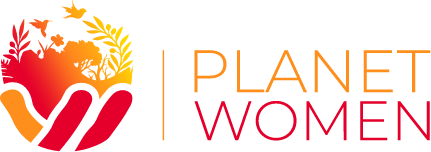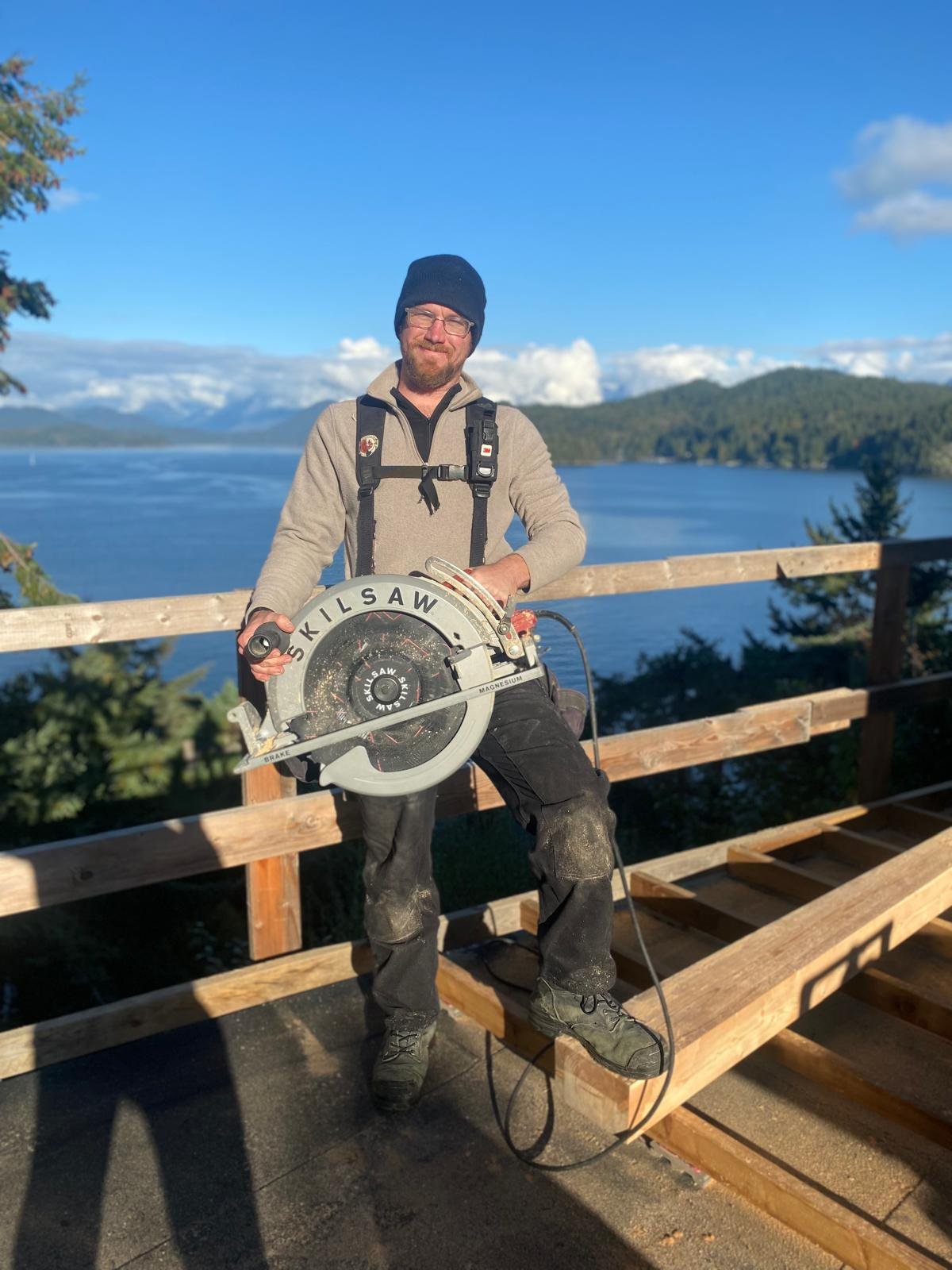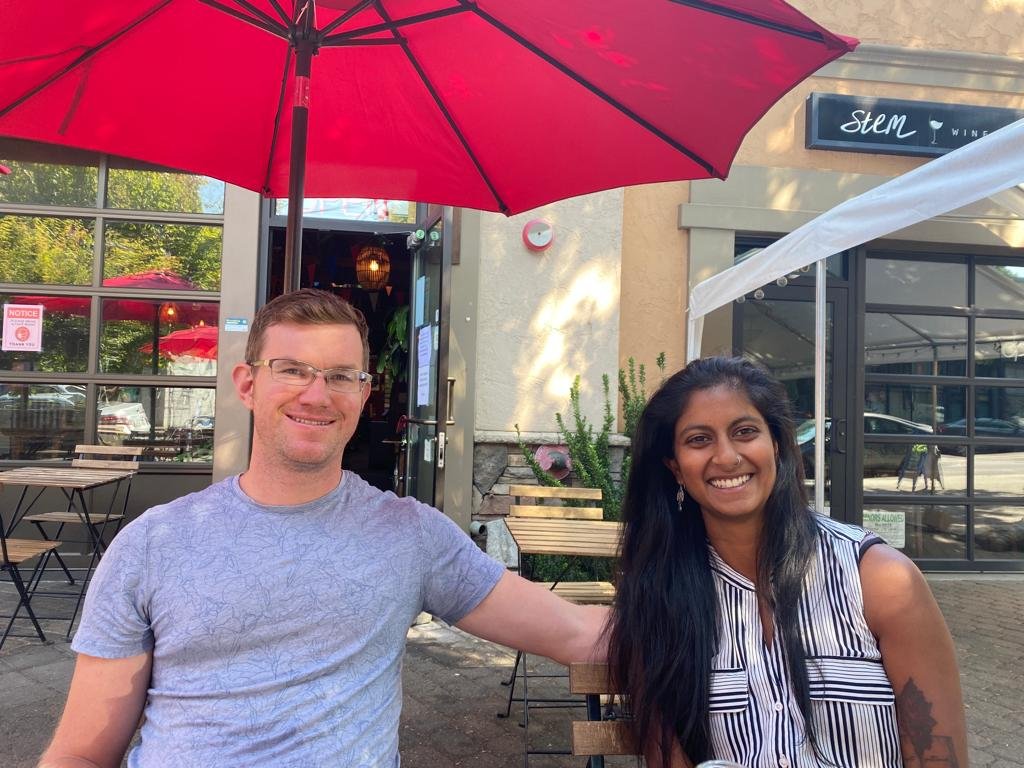The Practice of Male Allyship
We want to see everyone get a seat at the table when it comes to shaping the future of our Earth. Unfortunately, that is not the reality today. Right now, senior leadership at the largest U.S. environmental organizations and philanthropic foundations is still largely White, male and from the US or Europe. Globally, less than one percent of philanthropic funding goes to women-led environmental initiatives. That’s a problem because data shows that solving climate change is inextricably linked to increasing gender equity. Since 2020, Planet Women has invested $4.5 million into projects and leadership trainings that benefit women, nature, and communities.
Throughout history, solidarity amongst diverse communities is what’s led to sustainable and effective change. When it comes to boosting women's power and opportunities so they can drive positive change, male allyship is key. Fortunately, there are many men who support Planet Women and our partners who are protecting nature, supporting communities, and increasing gender equity across the globe.
To gain insight into how male allyship can be effectively practiced, we spoke with Sean Wintroath. Sean is a founding member of The Ripple, Planet Women’s monthly giving circle, and cares deeply about environmental conservation and supporting the rights and education of women and girls.
He is a White, cisgendered, heterosexual, able-bodied, male. A former teacher who studied forestry and agriculture in Oregon, Sean has worked as a carpenter for several years in British Columbia. While Sean is conscientious about declaring himself a male ally to avoid being performative, he was “nominated” to share his experiences by longtime friend and Planet Women team member Kimberly Absher.
Kimberly says, “Sean takes the safety and inclusion of women and other historically marginalized people very seriously. He is courageous in speaking up and actively continues to learn about social and environmental justice issues. And he thoughtfully acknowledges that, like all of us, he and his allyship are works in progress.”
Sean describes male allyship as a process—rather than an action—that we’ve broken into four steps: realizing inequity exists, identifying the root; understanding positionality; and learning and unlearning.
Realizing inequity exists
Sean describes his own process of male allyship as transformative and continuing to unfold after several years. He explains how it began: “I’d like to say that I just got curious about the inequity in the world and then got to the bottom of it, but the truth is that a lot of what I said and did in the first quarter century of my life was problematic, and in that time the women in my life were generous with their energy and tried pointing it out. I lost good friends. I heard the same things enough times to start listening. Finally, I started the process, noticing inequity and exploring the reasons behind it.”
Sean took a job teaching at a school in Japan for international students, where gender inequality was apparent. “Usually, these events were small and not unique to this community, such as how the boys treated the girls as inferior—something you find everywhere. However, the discrimination could be as impactful as a family choosing to keep a girl at home during her period every month for cultural reasons. Missing school consistently placed a burden on that girl that the boys did not have to bear. For the first time I was thinking about girls around the world whose chances at a decent life were cut down for no better reason than, ‘that’s the way it’s always been.’”
For the girls that missed large chunks of school, Sean did his best to assemble materials for home study. But feeling out of his depth and needing an outlet, he started donating to a girls’ education organization, which was “the first concrete action I remember taking to support gender equality in the world at large.”
Male allyship on display at the 2017 Women’s March in Los Angeles. © Samantha Sophia on Unsplash
Identifying the root of inequity
Sean says while a lot of men can see that things are not equitable, many buy into the wrong explanations, which are “largely geared toward White men.”
“A common one from many communities, both religious and secular, is that each person’s life is the way that it is because of their own choices. As a White male, I get to think my advantages were earned, and I don’t have to help other people who clearly must have been making poor choices.
A more correct reason for the inequity would be that we’re all living with the legacy of a world history dominated by men, and in this part of the world by White men specifically, and a significant portion of each successive generation of White men has opted to participate in and benefit from that domination. Growing up the way I did it was easy to miss all the barriers I wasn’t facing, but that were nonetheless working against all of the non-White and non-male people around me. I likewise assumed the opportunities I had were afforded to pretty much everyone in my society.”
Understanding positionality
“The next step in the process was to start noticing how the situations I found myself were impacted by my race and gender.” What Sean is touching on is his positionality. Positionality is defined as:
The social and political context that creates your identity in terms of race, class, gender, sexuality, and ability status. Positionality also describes how your identity influences, and potentially biases, your understanding of and outlook on the world. (Dictionary.com)
White men identities have been considered the standard, making their experience seem universal. Lack of exposure to diverse representation often results in a single narrative being understood in broader American culture. In a culture that limits accessibility to diverse voices, histories, and perspectives, individuals are more likely to rely on biased or incomplete information.
However, recent movements have started to disrupt that standard. He says, “Now Me Too is happening, and Black Lives Matter is happening, and White men have to consider their race and their gender in ways that they didn’t before, because their identity was the default identity. And they don’t seem to be taking it well in lots of different ways.”
Learning and unlearning
A Harvard Business Review article by W. Brad Johnson explains, “Allyship involves a constant commitment to learning about the experiences of other groups, fostering a growth mindset, welcoming feedback, reflecting on missteps, and iterating to get better.”
Sean continues to seek resources to learn and unlearn: “I keep looking for books and podcasts that feature intersectional identities because there is limitless nuance and variation in people.”
Learning is a lifelong process and seeking out opportunities to hear other perspectives leads us to continue challenging our assumptions, unveiling new understandings, and becoming effective agents of change. Sean says, “Understanding people, really connecting with what it means to be them, is one of the hardest things to do for those who are not practiced in listening while considering multiple points of view. Everything about our traditional mainstream culture is designed to simplify human relations into something simple, accessible, predictable.”
Taking action: Partnering with women leaders who care for our earth
While continuing to learn from different perspectives, Sean also takes action in two ways: by speaking up and donating to support gender equity.
Working in the trades, Sean says, there are (unfortunately) many opportunities to choose whether to speak up. As an ally it’s a challenge to create a work environment that offers due respect to women.
“Creating that space can occasionally look like calling out aggressively sexist comments on job sites. When an opportunity to counter something like that comes up, part of me wonders what the point is in confronting a person that rotates through sexist, homophobic, and racist comments for sport. But the end of the day it’s about defining the space we all have to share.”
To boost women’s inclusion and leadership on a broader scale, Sean also supports Planet Women as a member of The Ripple. He says, “What I appreciate is that Planet Women connects protecting nature with improving gender equity. And combatting the inequities in the conservation field by getting more women into key leadership positions. The organization struck me as innovative, inside and out, and addresses issues that I have considered existentially important for a long time.”
He applauds Planet Women’s approach of investing in women who are already leading projects in their communities, ensuring that local leaders are making decisions for their own futures. “What appealed to me is Planet Women connects with and resource local leaders based on what the community needs– rather than coming in with projects or agendas created without community participation. They also focus on changing leadership for the better at environmental organizations, making their output more effective. So, I started to support them, modestly, and my wife Charlie joined shortly after. We are glad to donate each month.”
Sean Wintroath with wife Charlie Prasad. © Kimberly Absher
Bottom line
Sexism – along with racism, xenophobia and other forms of discrimination– causes harm to individuals, groups, and organizations, and sabotages efforts to solve the environmental crisis. Thus, an ally must remain proactive in understanding the privilege they have been afforded and leveraging it for positive change. For male allies, Sean says, “If a man looks for it, he’ll notice hierarchies based on gender everywhere. He can choose to reinforce, ignore, or work to change those hierarchies in the different social circles that he travels.”
References:
https://www.dictionary.com/e/gender-sexuality/positionality/
https://hbr.org/2022/08/men-stop-calling-yourselves-allies-act-like-one



